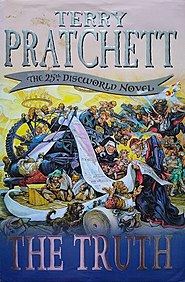
Some books begin with a good idea, but have flaws in the execution. Some, like Terry Pratchett’s Monstrous Regiment, start with a premise that’s not too workable, but are still well-written.
Some fail on both counts, though. There’s no pleasure for the reviewer when this happens, but the purpose of reviews is not only to let the readers know whether the book is worth their time, it’s to highlight things which the writer could improve when working on the next book.
The book in question is The Will to Win, by Patrick Davy. In the summary, I read that the protagonist, Bonita Stickles, is a college senior who wants to get married and have children. But since she’s a pastor’s daughter, she’s caught between her religious upbringing and her attraction towards a man who may not be suitable for her.
This could have been the basis for a compelling story about a woman who tries to balance her desires and her beliefs. In the second sentence, though, Bonita thinks that she will be twenty-two next year. This means,
“I might not have enough time to start my career, get married and have a baby.”
This is a consistent theme. Bonita is always afraid that she will run out of time to have a baby, which would be understandable if she were near menopause. Since she’s twenty-one at the start, though, it just seems strange. Although I appreciate the writer wanting to portray motherhood as a positive goal for women, Bonita’s fixation on this was so single-mindedly desperate that it was impossible to identify with.
Her method of achieving these goals is to wear a low-cut dress and invite a male classmate to church. When he says yes, this is a sign that God has sent her the right man. The writer may have been trying to warn young women about mixed signals, but the flat, telling-not-showing style doesn’t provide any realism or conflict.
The classmate, Nick, goes out with Bonita until they find themselves in his apartment during a storm. It wasn’t clear whether they had sex because there was a literal jump cut to “forty-five minutes later”. Still, Bonita is pregnant in the next chapter. At this point I wondered about this book’s genre, since it’s not women’s fiction. It may have been meant to be inspirational, but I found the church service more rowdy than spiritual.
“Hallelujah!” Bonita shouted… Bonita screamed another hallelujah.
“Thank you Lord,” Mother Stickles shouted and Vie started dancing in the aisle and speaking in tongues.
The story established Bonita’s father as “the pacemaker-wearing father”, so I expected him to have a heart attack at any time. After that happens, Nick breaks up with her and the next chapter begins ten years later. The experience has slowed down Bonita’s husband-hunt, but she meets an army recruiter and notices he has a “chiseled chest”. Then, just as she did with Nick, she makes sure that he goes to church. This is a sign that her long search is over.
I think the second half of the book was meant to show that Bonita has held on her dream(s), but she hasn’t grown up or become any more dimensional a character. Anyway, the man proposes to her, but he’s then deployed to Iraq, where he’s seriously injured and left paralyzed. Six days later, after hearing that he can’t work on making a baby any time soon, Bonita tells his doctor that they’ll try artificial insemination instead.
At this point, her quest went from strange and obsessive to offensive.
The book is not technically competent either. The scientific details are inaccurate; I worked for a medical laboratory network, and fertility specimens can’t be collected the day before the tests, nor are HCG levels determined from a urine specimen. There are numerous grammatical and spelling errors, e.g. “the pancake and beacon scents” (page 16), and peculiar descriptions. For instance, when Bonita tells her new man that she has a son, “She glimpsed him fluttering his eyes and looking shock” (page 53).
A disclaimer makes it clear that the publisher, PublishAmerica, allowed this book to be printed without editorial support, and it shows. Most if not all of the technical errors could have been caught by a copyeditor, and an editor might have improved the plot and characterization. At it stands, though, this book has far too many problems for its 132 pages and price tag of $24.95. I’m afraid I can’t recommend it.

















